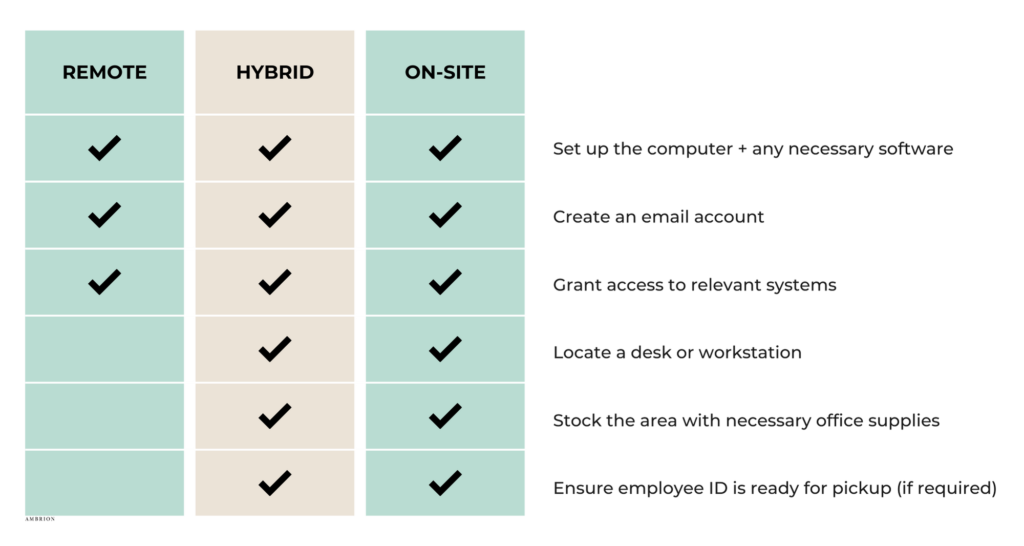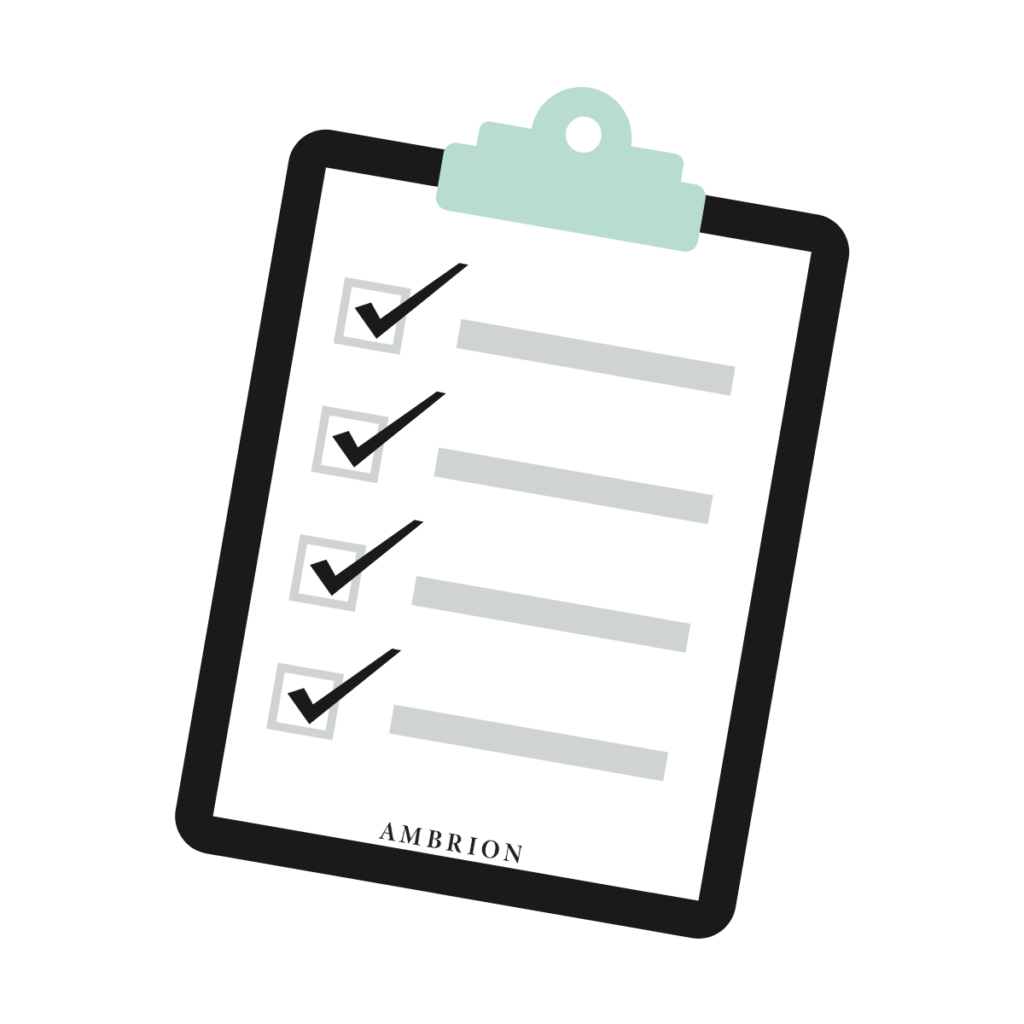Successful onboarding starts well before your new hire’s first day—it begins during the interview process. Setting clear expectations and communicating openly from the start lays the foundation for a smooth transition and long-term success.
However, trying to cram all the necessary training into a short period can be overwhelming for both the new employee and the hiring manager (you!). The key is to break up the onboarding process into manageable stages, allowing your new hires to absorb information gradually and feel more confident in their role.
In this blog, we’ll explore:
- 3 onboarding best practices
- How to structure your onboarding process for success
- A step-by-step guide to creating a welcoming experience
Let’s do it!
Three Onboarding Best Practices
![]()
1. Personalize the Experience
The onboarding process plays a critical role in retaining new hires, and as a hiring manager, it’s essential to stay engaged, even if HR manages the logistics. To create a personalized experience, incorporate tasks they expressed interest in during the interview process. Additionally, share the company’s history and introduce them to the team to help them acclimate.
Remember, each new hire is different, and onboarding should be tailored to their needs.
2. Fold People Into the Company Culture
Welcoming a new team member is an exciting time! Start by introducing the new employee to everyone on the team. Then, encourage team members to spend 15 minutes getting to know each other through coffee chats — more on this later.

Remember, first impressions go both ways, so make sure your team understands their role in creating a positive and inclusive environment. This investment of time helps to build strong long-term relationships and foster a culture of open communication.
3. Be Accessible
As a manager, being accessible and present for your new hire will help them feel supported and connected, even in a remote environment. One way to achieve this is to schedule more frequent 1:1s during the first 90 days, including video meetings and in-person time whenever possible.
It can be easy for your new hire to feel lost or disconnected — especially in remote settings — so make sure you’re available via work chat, email, or carrier pigeon to check in, answer questions, connect, and more.
10 Steps to Successfully Onboard New Hires
![]()
Preboarding — One Week Before
Preboarding, also known as self-boarding, begins as soon as the job offer is accepted and continues until your new hire’s first day. This crucial phase sets the tone for the entire onboarding experience.

Step 1: Send a Warm Welcome Email
A thoughtful welcome email shows your new employee that you value their presence and are invested in their success from day one.
Be proactive by sharing essential information and addressing common questions upfront. This approach helps your new employee feel prepared, excited, and confident about joining the team.
Step 2: Organize Their Workspace
A well-organized workspace, whether physical or digital, shows new hires that you value their time and are committed to a smooth transition into their role.
Use the chart below as a guide to ensure you’ve covered all the essential details for both on-site and remote employees.

Onboarding — the First Day
Focus on the following key steps, and you’ll ensure a positive and memorable first day that leaves your new employee feeling valued, supported, and excited about their future with your organization.
Step 3: Schedule a Welcome Meeting
Lay the groundwork for a positive and productive working relationship by dedicating time to connect first thing on day one. Give your new employee an introduction to the business, explain how their role fits in, and discuss any performance expectations you have for their onboarding. You should also use this time to share your leadership style, communication preferences, and any upcoming projects.

Step 4: Assign an Onboarding Buddy
Pairing your new hire with an onboarding buddy helps them navigate their first day with ease. The buddy can make introductions, answer questions, and provide a friendly face in an unfamiliar environment. This support system helps new employees feel more comfortable and reduces first-day jitters.
Step 5: Create Space for Acclimation
Starting a new job can be overwhelming, so it’s important to give new hires time to acclimate to their new environment. When planning the first-day schedule, build in dedicated blocks of time for your new employee to:
- Set up and personalize their workspace
- Explore onboarding materials and company resources
- Learn company software through tutorials and hands-on practice
- Reflect on their first day and jot down questions
Encourage your new hire to take breaks as needed to avoid information overload. After they’ve had a chance to settle in, bring the team together for a formal introduction. This allows colleagues to welcome the new team member and share their excitement.
Onboarding — the First Week
The first week of onboarding is an opportunity to immerse your new hire in the company culture, provide essential training, and help them build relationships with their peers.

Step 6: Assign Small, Achievable Tasks
If your organization has a formal training program, now is the time to implement it. If the training process is more fluid, you should still assign small, achievable tasks to help your new hire feel productive and valuable.
As an example, here are tasks some of our clients have assigned in the first week:
- Review historical resources
- Become familiar with where to pull data
- Shadow meetings and people
- Read any documentation related to the role
Step 7: Plan a Team Welcome Event
Infuse some fun into your new hire’s first week by organizing a team lunch, coffee break, or virtual meet-and-greet to break the ice and build camaraderie. This allows team members to introduce themselves, share their roles, and offer support. By facilitating these connections early on, you foster a sense of belonging and encourage collaboration.
Step 8: Schedule Check-In Meetings Once Daily
Daily touchpoints during your new employee’s first week help them feel supported and on track to succeed in their role.
Use these check-in meetings to:
- Celebrate wins (big and small)
- Recognize good work
- Define expectations
- Set goals
- Discuss and address any concerns
Onboarding — the First 90 Days
We often see one trend during this time frame: increased turnover. Studies show that about 30 percent. of employees will quit within the first 90 days of employment. To retain your newest and best talent, include steps 9 and 10 in your onboarding process.
Step 9: Prioritize Clear and Consistent 1:1 Meetings
By prioritizing regular 1:1 check-ins, you establish an open line of communication with your new hire and set expectations early on. Use this pie chart as a helpful framework to follow, but remember, consistency is key. Stick with your chosen format for the first 90 days. After that, you can re-evaluate and make any necessary adjustments.

Step 10: Continue Facilitating Relationship-Building on Your Team
Throughout the first 90 days, managers should continue to schedule social activities to intentionally fold new employees into the team.
Free Resource: Onboarding Checklist
![]()
Simplify your onboarding tasks and set your new hires up for success with Ambrion’s onboarding checklist.

